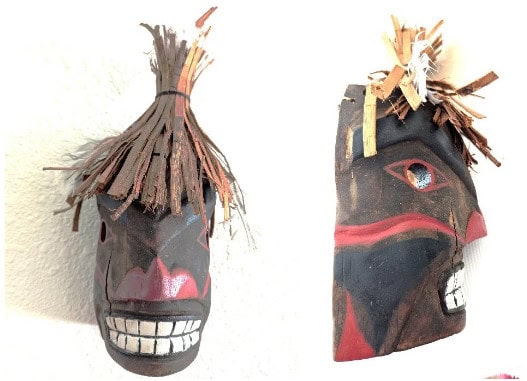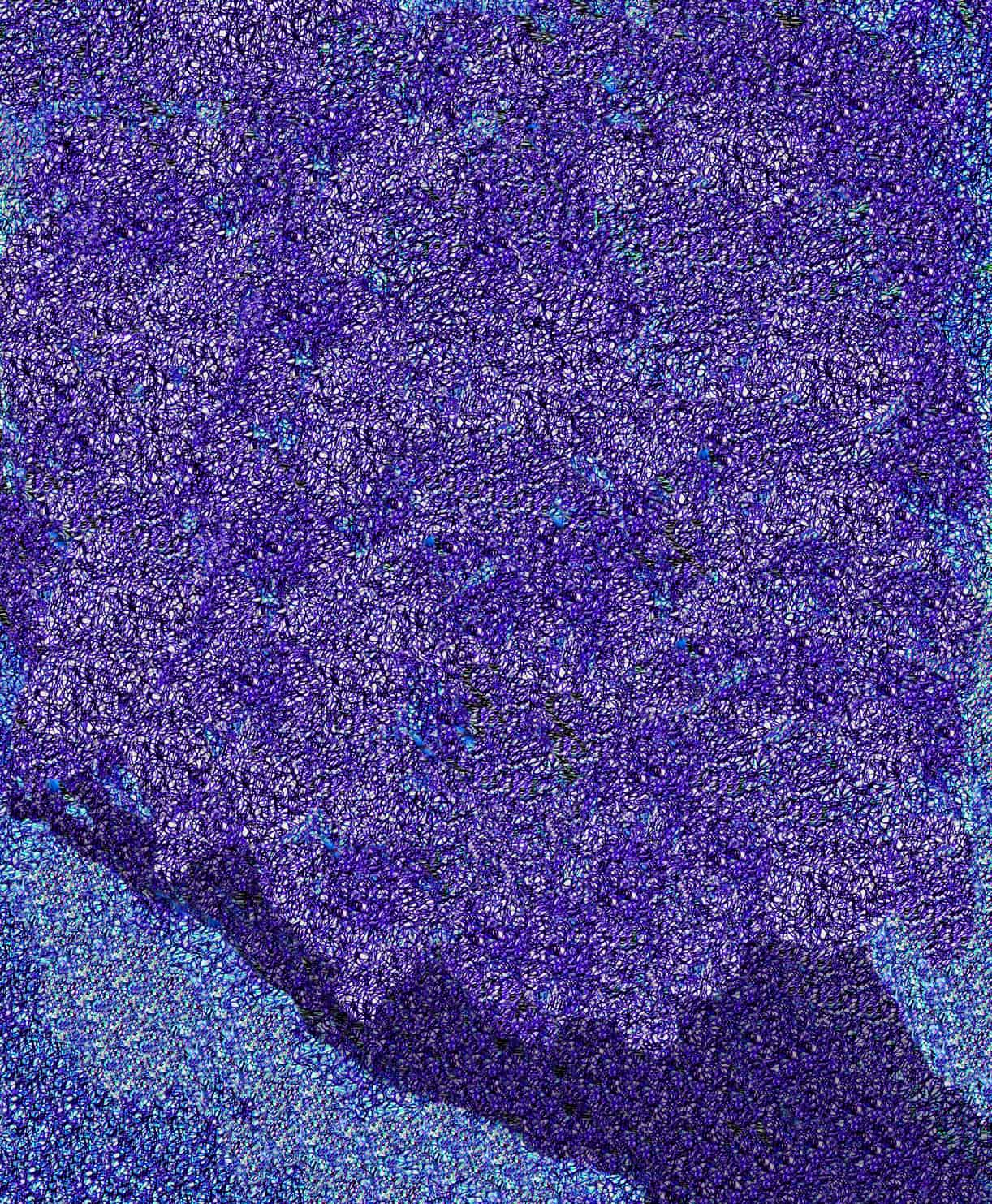
RIGHT: Side view of LaChester’s mask
For a year, I looked carefully at teeth, those on my friend’s and family’s faces and my own. To protect my dental roots and painful exposed nerves due to normal receding gums, for a person my age, my kindly dentist suggested covering my front teeth with a filling material. He would, of course, match the new veneer to my shade of enamel, currently a light yellow-beige – not horrible, but not pretty. I realized this procedure gave me a chance to create a mouthful of whiter teeth than I’d ever had. I could take them to my grave. This seemed like a vain quest and I felt embarrassed at myself.
Although abashed, I remained curious. I studied other people’s mouths and noticed a wide variety of colors, from dark yellow-brown to beige to white. I admitted to myself that I would love a brighter mouth, to heck with worrying about vanity. After googling the various methods in current usage, I decided to purchase “do-it-yourself” strips from a local store.
For six months before the dental procedure, I diligently whitened my enamel multiple times: four weeks at a time, then I would rest my teeth for a month. Next, I repeated the process. It worked. After half a year, my teeth gleamed.
During this year-long period, I stared at a lot of teeth, my own and others. Towards the end of that year, when my son and I walked into the Makah Indian Museum at Neah Bay, Washington, I burst out laughing at the sight of artist Angel LaChester’s carved cedar mask of a face with a full set of wide white teeth. The artist perfectly captured my past year’s preoccupation. I bought the mask, to continually enjoy the humor of seeing my obsession so powerfully depicted.
Interestingly, the Makah word for “tooth” proved to be the same as the Maori word: “niho”.* In Makah culture, depiction of “niho” in masks signified leadership, protection or ancestral ties. I didn’t know which quality Angel LaChester meant to show in this masterful carving. The cedar bark hat was waterproof, essential protection in the wet Pacific Northwest. Downy Eagle feathers adorned the top of the hat, emphasizing the eagle’s role as a messenger to the Great Spirit.
Although the overall expression on the mask seemed benign, bared teeth might create a fierce countenance, one a mother would use to protect her offspring. I have felt this impulse many times while raising my son. In this context, I could understand how the Makah concepts of leadership, protection and ancestral ties related to each other in the imagery of lips drawn back from a full set of teeth.
I loved the mask’s implication of ferocity coexisting alongside the broad and smoothly carved eyes and nose. The eyes were placed at the sides of the head, similar to an herbivore like a horse or cow. Compared to the front-facing predators’ eyes, the side placement gave a peaceful feeling and greatly lowered the tension inherent in bared teeth.
I followed through with my tooth whitening program. After I completed it and had shiny white choppers, my dentist protected my exposed nerves with the same shade of filling material, resulting in brighter, pain-free teeth.
On my wall, I daily enjoy LaChester’s wonderful Makah mask, reminding me to laugh at my vanity. I’m grateful this mask prompts me to continue to learn from that ancient native culture: balancing bared teeth with gentleness.
* The Pacific Basin cultures intermingled. A Hawaiian friend who speaks Hawaiian can also understand the Maori language, it is so similar. His DNA revealed he is 25% Maori, along with 1% Northwest Coast Indian with the rest from other Polynesian peoples.
Nov 1, 2025 to Feb 15, 2026
See Kaethe’s exhibit with the Walter Wickiser Gallery: Kaethe Kauffman drawings and paintings MORE INFO
